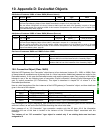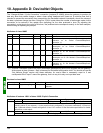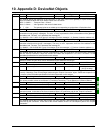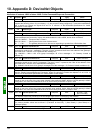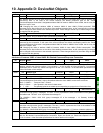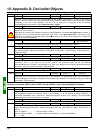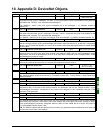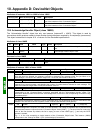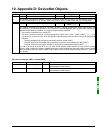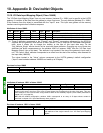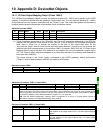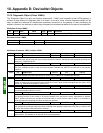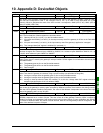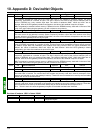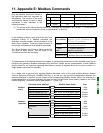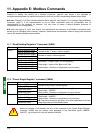
107
10. Appendix D: DeviceNet Objects
ID Access Name
Need
Type Value
16#06 Get
Data with ack path list size
Optional BYTE 1
This attribute represents the maximum number of members which can be placed in the data with ack path list. If
the value of this attribute is null, the size of the list is dynamic, which is not the case with the LUFP9 gateway.
16#07 Get
Data with ack path list
Optional BYTE , ( UINT , USINT,
USINT […] ) […]
(data with ack path list)
This attribute corresponds to the list of “connection instance / consuming application object” pairs allowing the
data received in an acknowledgement to be forwarded. An acknowledgement does not necessarily contain any
data and so this attribute is optional. It is made up of the following elements:
• The number of members of the list (BYTE).
• The list of “connection instance / consuming application object” pairs ( UINT , USINT, USINT […] ) […]. The
size of this list is set to the value of the first element, described above, and this list is made up of the following
elements:
- The acknowledged COS consuming connection instance number (UINT).
- The path length of the DeviceNet object intended to receive the acknowledgement data (USINT).
- The path of the DeviceNet object intended to receive the acknowledgement data (USINT […]).
E.g. 16# 01 00 04 06 20 04 24 98 30 01. The value of this attribute means that this list only contains a single
element (16#01) referring to instance 16#0004 and that the acknowledgement data path (16#06: length 6 bytes)
refers to attribute 16#01 of instance 16#98 of class 16#04, that is to say to data from output area no. 1, that is to
say “Output1.”
Services of instance 16#01 of class 16#2B
Service code Name of the service Need Description
16#0E Get_Attribute_Single Required This service allows to read the value of the single instance from the
“Acknowledge Handler Object.”
16#10 Set_Attribute_Single Required
This service allows to write the value of the single instance from the
“Acknowledge Handler Object.”



